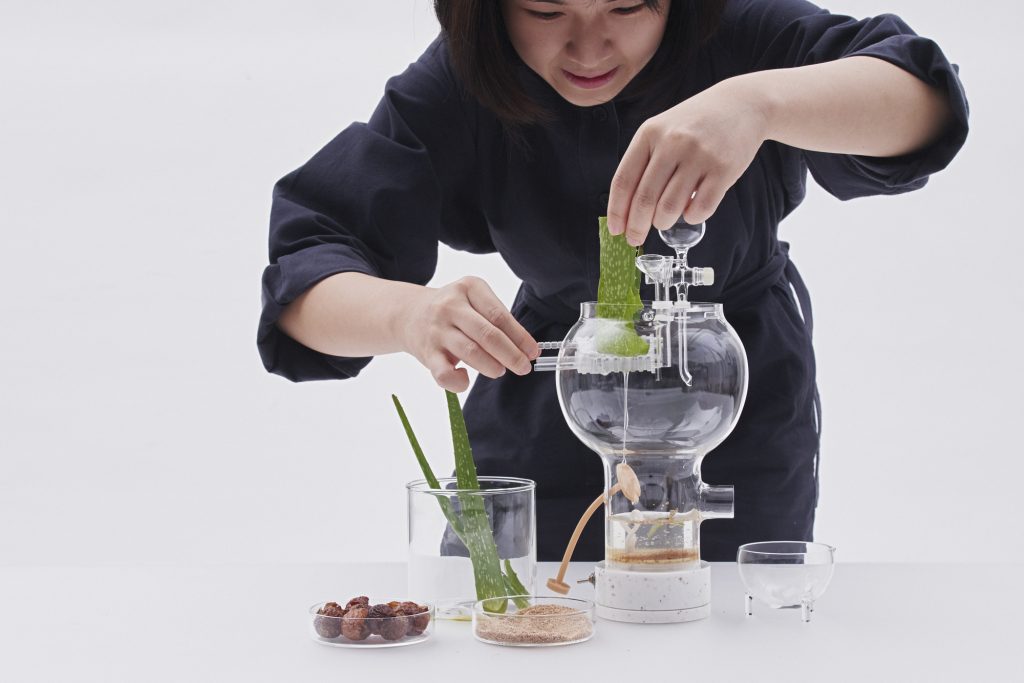DesignSingapore’s ‘Visions of the Future’
Presented online and at the National Design Centre, DesignSingapore Council’s hand-selection of seven designs by emerging Singapore designers relay a visionary approach to current issues like health-improvement, sustainable materials practices and safety.
“It is a joy to see our young designers’ in-depth design research and creative responses to the pressing concerns of today. From transforming the act of soapmaking into a meditative ritual, to empowering the elderly to hold onto their fading memories, these young designers provide a fresh perspective to everyday issues – and those brought anew in the current climate – that anyone can appreciate. We are most excited to present this intimate show to the world, both at the Singapore Design Centre and on a digital platform for all to enjoy.” – Mark Wee, Executive Director, DesignSingapore Council.
Over the last year, many of us have been grappling and trying to cope with what it means to live in a pandemic. This state is not only a physical state of being, in isolation and distanced, but also takes place within our minds. Although it seems as though 2021 will bring a new chance of ‘normalcy’, the effects of this monthlong quarantine and isolation will most probably linger; we see the repercussions in the cognitive decline of seniors with dementia and the rise in mental health cases of anxiety and depression. It’s not that large of a jump then, for DesignSingapore Council’s main question for their 2020 edition to be: “How might design help us to thrive despite the challenges of the moment and reimagine hope in such dire times?”
Exhibition designers and curators Wendy Chua and Gustavo Maggio (of multidisciplinary design practice Forest & Whale) were inspired by the peak-and-trough patterns of COVID-19 infection cycles and refer to the idea of ‘riding out the waves of a pandemic’. Implicitly perhaps, the exhibition also signifies a new wave that’s coming into design thinking at a time of converging crises. “We made the decision not to create a brief that designers would respond to. Instead, we wanted to curate a collection of future narratives seen through the eyes of young designers,” Chua explains. The seven proposals from eight designers were selected through an open call in 2019, and were originally intended to be presented at Milan Design Week in 2020. Though plans for Milan were thrown out when the design event was cancelled due to the pandemic, Chua says all of the proposals, which deal with issues like climate change and mental well-being, only gained more relevance and meaning through the subsequent events of the year.
Beyond the immediate needs of the crisis, ‘Visions of the Future‘ explores the intangible but deeply rooted cultural beliefs that anchor one in a future filled with uncertainties. Through new interpretations of rituals of repair and mindfulness, the online and physical show curated here aims to show how design plays a pivotal role in building financial, mental and emotional resilience. The seven works presented in ‘Vision of the Future’ illuminate the opportunities in the crisis by imagining new rituals of living after the COVID-19 pandemic. Through innovations in craft, technology and materials, the designers illustrate a hopeful future; one in which (single-use) plastic packaging is eliminated from the cosmetics industry [as presented in Yingxuan Teo’s ‘Mass Production of Happiness’]; we reconsidered unconscious behaviours [like in Kevin Chiam‘s ‘Design Probes’]; and rituals of care are re-introduced [as in Jasmine Quek’s ‘Phenomenal Wood’] .
‘Visions of the Future’ by DesignSingapore is on view at National Design Centre [Singapore] until January 7th, 2021. Exhibits and a full programme of discussion panels and podcasts will be available on the dedicated microsite https://visionsofthefuture.sg/.
Cover Photo: Taking an experimental approach to pneumatics (a branch of engineering that makes use of pressurised air), ‘Pneumatics Touch’ by Sheryl Teng seeks to investigate how air can “come to life” in the form of a pneumatic textile, which responds to the needs of the user and the environment.












